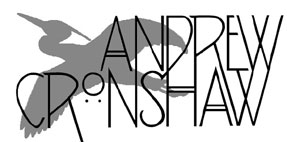
- Andrew Cronshaw website -
- Andrew Cronshaw MySpace -
- Cloud Valley Music website -
- Andrew Cronshaw website -
- Andrew Cronshaw MySpace -
- Back to Reviews Introduction page -
Written in Folk Roots issue 160, 1996
TELLU
Suden Aika
Kansanmusiikki-instituutti KICD 43 (1996)
SINIKKA JÄRVINEN
Weisuun Riemu Ja Rajuus
Herättäjä-Yhdistys H-YCD003 (1996)
TALLARI
Komiammasti
Kansanmusiikki-instituutti KICD 45 (1996)
LIISA MATVEINEN
Ottilia
Olarin Musiikki OMCD 55 (1996)
There’s a new, questing vocal energy emerging in Finland, linking with the old
traditions, and a prime example is ex-Hedningarna singer Tellu Virkkala’s bold
and magnificent project based on the old runo-songs, Suden Aika (The Time
Of The Wolf), performed by the four intertwining female voices of Tellu,
Hedningarna colleague Sanna Kurki-Suonio, Liisa Matveinen and Pia Rask, with
occasional percussion mainly by Tina Johansson and extra vocals from Outi
Pulkkinen, Anita Lehtola, and a particularly rare archive recording of the
passionately sobbing Malina Vetsinei.
Drawing on the same huge body of traditional
song-poetry, Elias Lönnrot in the 19th century chose and modified what he needed
to make his Kalevala jigsaw, leaving out the musical aspect to make a
literary epic. A traditional singer selects and often modifies too, favouring
the songs which most reflect his or her feelings. Tellu selects, arranges and
changes, adding to the tunes and lyrics to make something which in terms of
music and story speaks for her. The story, told in resonant images more than
narrative, of a woman’s birth, entrapment and quest for her own life, Suden
Aika is a continuation of a great living tradition.
There was no doubt, at its live performances at
Kaustinen in 95 and 96, that here is a touchstone for the next Finnish phase;
the shows were packed full of the new wave of young musicians. This is a
beautiful noise, whether one understands the lyrics (well translated in the
digipak booklet) or not, speaking with a strength, depth and richness of colour,
and I think this album, and the glimpse of a different way of seeing and making
music it reveals, are likely soon to turn ears far outside Finland.
Sinikka Järvinen’s album explores another area of
the Finnish vocal tradition, one linked to a change in the way Finns of an
earlier age explained the world - they moved from the stories perpetuated in the
runo-songs to Christianity, and in time generated a distinctively Finnish hymn
tradition. Weisuun Riemu Ja Rajuus features Järvinen’s singing, her and
Matti Kontio’s kanteles, archive recordings of Matti Tyhtilä, a choir and
chamber orchestra in nine traditional hymns. No plummy, warbly church choralics,
these; each voice comes across as that of an individual. Opening with a vocal
solo, supported only by a foot-tap, followed by ringing kantele accompanying a
male vocal ensemble, and later the splendid, almost Vaughan Williams-like
soaring orchestra and kantele instrumental Ole Kärsiwa, Nöyrä Ja Siwiä,
this is a remarkable piece of work, strong, sometimes sombre, sometimes
vulnerably delicate.
Tallari’s tenth-year anniversary album
Komiammasti is partly devoted to a recap of “greatest hits”, but its most
distinctive moments derive from the new material, and particularly from the
rich, deep vocals and approach to arranging of Pia Rask, who has just finished a
two-year stint with the band.
She particularly excels in vibrant, slow numbers,
and has even stung Risto Hotakainen, who rarely takes lead vocals, into putting
his mouth where his fiddle usually is in a striking, sliding duet, Koputtelin.
The band seems to respond with risk-taking, including Ritva Talvitie’s soaring
violin and Timo Valo’s suddenly Hammond-esque harmonium break on Uuteen
Soussuun.
Members of Tallari, together with Heikki Laitinen
(who shares lead vocals), Anna-Kaisa Liedes and Maria Kalaniemi, are involved in
Liisa Matveinen’s album of songs collected by Erkki Ala-Könni from Ottilia
“Tiila” Ilkka (1875-1963). Quite a number of these found their way into the
repertoire of Tallari, of which Matveinen was a member for five years from 1989.
They’re folk-songs, but of form much more recent than the runo-songs, being
largely of the category known as reki-song. In terms of scale and modality some
have similarities to the hymns of Järvinen’s album but, even when sung slowly,
reki-songs have a distinctive underlying chugging rhythmic structure with a
double or triple beat at line-ends.
Some here, though, have other forms, such as the
lyricism of Muistan Aijan, or Heilani and Orotappas which
begin slow then pick up to a trot. The vocal sounds move between a caressing
softness and a hard-edged declamatory stridency; though Tiila Ilkka was from
southern Pohjanmaa, in the west of Finland, Matveinen brings to the music
something of the Eastern voluptuousness of the tradition of her own native
Karelia, on the Russian border.
© 1995
Andrew Cronshaw
You're welcome to quote from reviews on this site, but please credit the writer
and fRoots.
Links:
fRoots - The feature and
review-packed UK-based monthly world roots music magazine in which these reviews
were published, and by whose permission they're reproduced here.
Kansanmusiikki-instituutti (Finland's national Folk Music Institute).
It's not practical to give, and keep up to date,
current contact details and sales sources for all the artists and labels in
these reviews, but try Googling for them, and where possible buy direct from the
artists.
Helsinki's Digelius Music
record shop is a great source of Finnish roots and other albums.
CDRoots.com in the USA, run by
Cliff Furnald, is a reliable and independent online retail source, with reviews,
of many of the CDs in these reviews; it's connected to his excellent online magazine
Rootsworld.com
For more reviews click on the regions below
NORDIC
BALTIC
IBERIA (& islands)
CENTRAL & EASTERN EUROPE, & CAUCASUS
OTHER EUROPEAN AMERICAS OTHER, AND WORLD IN GENERAL
- Back to Reviews Introduction page -